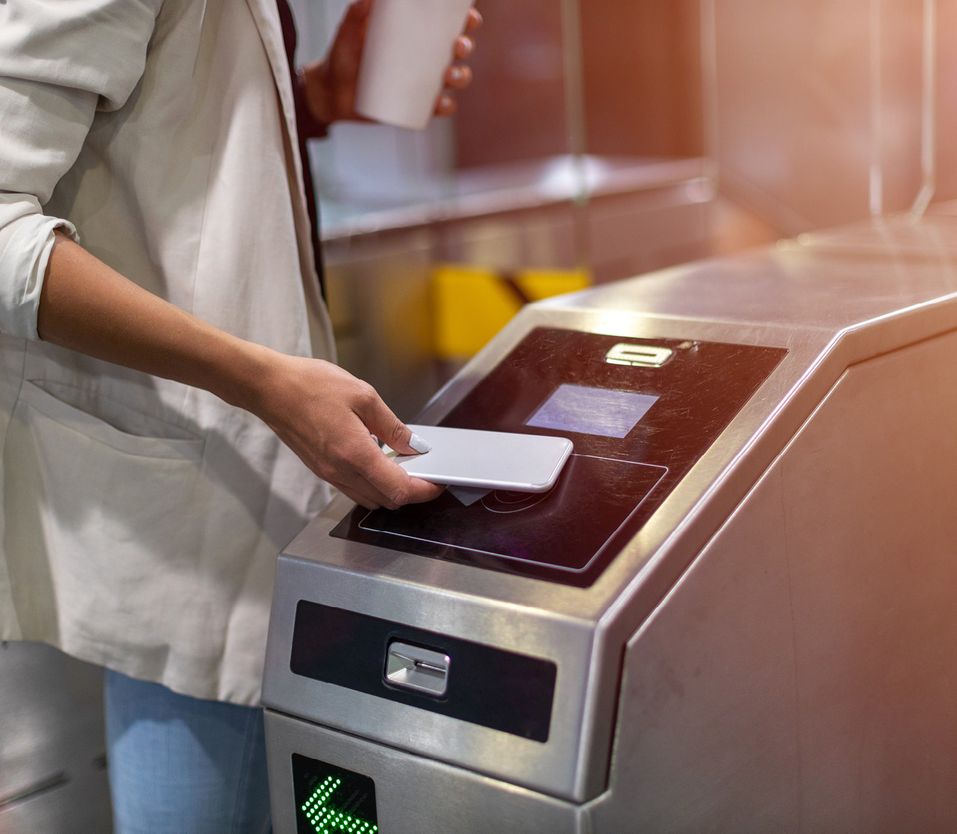Transport ticketing has rapidly evolved in the digital age. As recently as the 1990s, closed loop systems based around paper tickets or tokens were the norm. This resulted in a poor user experience. Lines to purchase tickets were often long, and turnstile throughput was inefficient. Today, passengers can use a smartcard or even their phone as their ticket, utilizing contactless and Near Field Communication (NFC) functionality to tap-and-go.
This proliferation of digital ticketing has only been further accelerated over the last 18 months. The pandemic has presented Public Transport Operators (PTOs) and Public Transport Authorities (PTAs) with an urgent need for hygienic contactless solutions. As passenger numbers slowly begin to return, the ecosystem is presented with a unique opportunity to advance urban mobility and move towards a Mobility-as-a-Service (MaaS) model. However, with this also comes a series of challenges.
Reacting to changing user behavior
Today’s consumer world is digital, global and on demand. Passengers want seamless integrated solutions that allow them to plan and pay for their transit using only the device in their pocket. Furthermore, the urban mobility ecosystem is seeing a rising demand for interoperable MaaS solutions that provide end-to-end transportation on a single ticket. Mobile ticketing must deliver on these expectations as well as being user friendly, reliable and secure.
In part, this is being achieved by changing the focal point of urban mobility from the station to the passenger themselves. This consumer-centric approach allows PTOs and PTAs to reconfigure their sales and distribution channels to meet the growing demand for digital solutions.
Mobility providers can achieve this by integrating Host Card Emulation (HCE) and NFC technologies into their ticketing solutions. More technologically literate passengers will already be familiar with digital wallets and contactless payments. This mitigates concerns about achieving widespread user adoption and means that any digital urban mobility solution could be rolled out at speed. Another benefit to this is that it significantly cuts costs for providers. As passengers no longer require mode-specific travel cards, everything is instead accessible on one device. Providers can therefore cut their expenditure on manufacturing the cards themselves. They can also scale back the on-the-ground resources allocated to support issuance.
Context is key
When rolling out a solution, providers must be mindful that each individual passenger has different needs. Cities have unique transit networks of varying sizes that require different approaches. Furthermore, any solution must be accessible to all demographics, from digital natives to those who are less technologically adept. They must also remain aware that not every passenger will have a bank account. Solutions must not exclude people. They must offer customers a range of options to make their payment.
Account-based ticketing (ABT) manages the consumer’s funds in the back-office account, making the payment automatically. This gives users flexibility to move between several fare media to make payments depending on what is most convenient at the time – be it by smartcard, mobile device or wearable. To this end, ABT solutions simplify maintenance logistics, improve security while also ultimately reducing the cost of urban mobility.
By moving from a stored value card system to an account-based approach, PTOs and PTAs can achieve “the holy grail of ABT” as it has been described by Visa. This system opens the door for future adjacent services by achieving interoperability between different fare media.

The importance of open standards
Open standards can offer a pathway to truly realizing seamless transport ticketing. With open standards, PTOs and PTAs remain in control of their ticketing network as the supply chain remains open to multiple solution providers. Providers can therefore avoid vendor lock-in and the issues that can present. Furthermore, an open standards approach means that PTOs and PTAs can evolve organically with the technology as it is rolled out. This allows them to remain agile and prepared for future challenges and developments.
The need for expertise
PTOs and PTAs will need to continue evolving with future technological developments. By remaining aware of the challenges that may lie ahead, they can put themselves in the best possible position to capitalize on opportunities. Infrastructure migration does not necessarily require huge investments, and with the right support, the transition can be made as smooth as possible.
Fime’s global expertise can help demystify and simplify ABT deployment. With over 20+ years of experience ensuring the efficient and successful implementation of card and mobile transaction services. Fime is well-equipped and experienced in supporting the transport market in delivering the next generation of transit ticketing solutions in a complex market.
Learn more about mobile ticketing and how Fime can help you.

